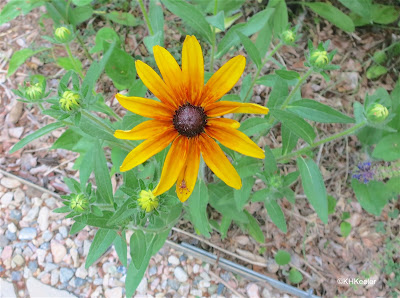Today, you mostly hear of St. John's wort (Hypericum perforatum, St. Johns wort family, Hypericaceae) as a medicinal plant. It has been shown to be effective treating depression, anxiety, and sleep disorders and is widely used for those. But when I studied ecology in graduate school in the 1970s, under its American name, Klamath weed, it was the weed in a major weed-control story. So here are both tales.
 |
| St. John's wort, Klamath weed, Hypericum perforatum |




